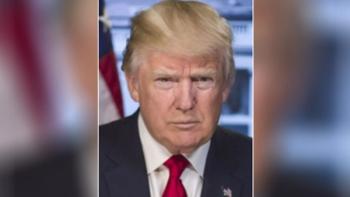
- Pharmaceutical Commerce - November/December 2015
Drug pricing will be a hot-button issue in this election cycle
2014 was a breakout year
for US pharma industry revenues, and 2015 is likely to be the same, given the volume of new drug introductions and expanded patient care under the Affordable Care Act. But as this year winds down, and as the omnipresent presidential campaigns crank up, the industry is heading for some stormy weather over the next year. Will the industry batten down, putting forth its usual defenses over drug pricing, or will it chart a new direction?
One can reach back for decades to find news clips about criticisms of drug pricing, but what had been a trickle of such complaints in the past is turning into a constant drumbeat. As this issue was going to press, Valeant Pharmaceuticals, which has seen its stock valuation drop by some 50% in mid- to late October, was reported to have received federal subpoenas, combined with a less-than clear explanation of intracompany sales between its manufacturing arm and a specialty pharmacy that may or may not be a subsidiary. Valeant’s CEO, J. Michael Pearson, has made the concept of “repricing” drugs—jacking their prices by triple-digit percentages after the drugs’ manufacturers were acquired by Valeant—a subject of headlines. Valeant’s bad press followed on the heels of the now infamous private investor, Martin Shkreli, who repriced an anti-infective, Daraprim (pyrimethamine), by some 5,500%.
These baroque exercises in public protest and defensive posturing were preceded by more measured debate during the summer over the introduction of the PCSK9 cholesterol treatments—drugs whose high cost and broad potential usage could mean tens of billions of dollars annually added to medicine budgets. And that debate, in turn, was set up by the faceoff between payers and Gilead Sciences last year over the introduction of Sovaldi and then Harvoni therapies for hepatitis C—drugs that generated first-year sales of around $10 billion for the company.
Along the way, presidential candidate Hillary Clinton weighed in with a speech and position statement, proposing to allow Medicare to negotiate drug prices, and to allow importation of drugs from abroad—both campaign planks that show up every recent election cycle—but also to steer, by means of tax policy, industry R&D spending (underinvestment in R&D would trigger rebates). No Republican candidate has made a coherent proposal, although the ever-quotable Donald Trump indicated his displeasure with Shkreli, calling his actions a “disgrace.”
Presidential candidates of both parties probably feel a freer hand to lash out at the pharma industry because public sentiment is decidedly against it. A Kaiser Family Foundation poll in late August found that 72% of Americans feel that drug costs are “unreasonable” and even more (74%) feel that “drug companies put profit before people.”
Secular trends are running against the industry as well. The cost relief that payers have enjoyed because of lower generic costs is mostly run out; the rate of generic usage is approaching 90%, and there simply won’t be as many off-patent conversions to affect overall drug costs the way the “patent cliff”—when a sizable number of conversions occurred at the same time as a drop in new drug approvals—did in the 2010-2013 period. Generics pricing itself has been on the rise in the past couple of years. Also, consumers today are paying more out of pocket for drugs, a planned-for effect of the “consumerization” of healthcare.
The pharma industry is already contending with the intricacies of value-based payments for drugs, and the heightened attention on outcomes as a measure of a drug’s value. But the one thing that seems to gall most policymakers and industry observers is the relatively free hand brand owners have to set a product’s price. The Daraprim dispute is just a more blatant example of the price increases the industry routinely imposes on payers and patients.
PhRMA, arguably the most powerful of the industry’s lobby in Washington, has been sticking to its tried-and-true defenses against price control and importation. “Secretary Clinton’s proposal would turn back the clock on medical innovation and halt progress against the diseases that patients fear most,” said John Castellini, outgoing president of PhRMA, after Clinton’s September speech. “These sweeping and far-reaching proposals would restrict patients’ access to medicines, result in fewer new treatments for patients, cost countless jobs across the country and erode our nation’s standing as the world leader in biomedical innovation.”
The truth of those statements has been debated continually in recent years; will the same argument hold the wall in the coming year? Is it time for a new approach to defend the industry’s position in healthcare and cost containment? One possible direction comes out of the Kaiser poll mentioned above: Respondents favored, by 86%, a rule that would require drugmakers to “release information to the public on how they set their drug prices.” But how many drugs, and their owners, could withstand a public review of that subject?
Articles in this issue
about 10 years ago
Who's the best in business-process outsourcing?about 10 years ago
PDI chooses Veeva's Network Customer Master solution for MDM managementabout 10 years ago
Zephyr Health introduces a new IT tool for product life-cycle managementabout 10 years ago
Transparency-reporting trends in Europeabout 10 years ago
For better patient data in pharma, think CUPIDabout 10 years ago
GDUFA Fee Relief For Small Businessesabout 10 years ago
Dissecting the speed-to-therapy questionabout 10 years ago
AmerisourceBergen defines its path forward in traceabilityabout 10 years ago
Getting products to market fast with the 3PL Title ModelNewsletter
Stay ahead in the life sciences industry with Pharmaceutical Commerce, the latest news, trends, and strategies in drug distribution, commercialization, and market access.




